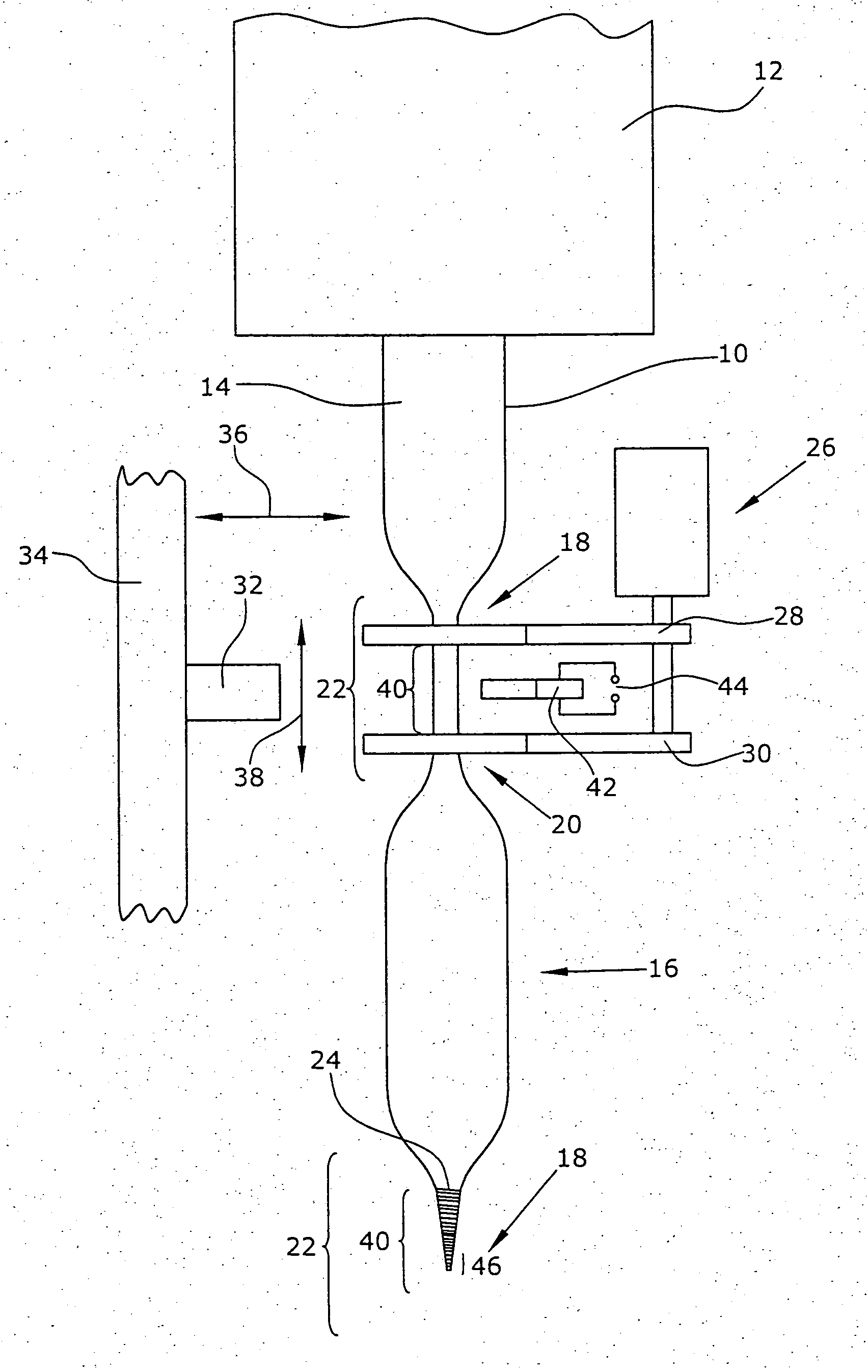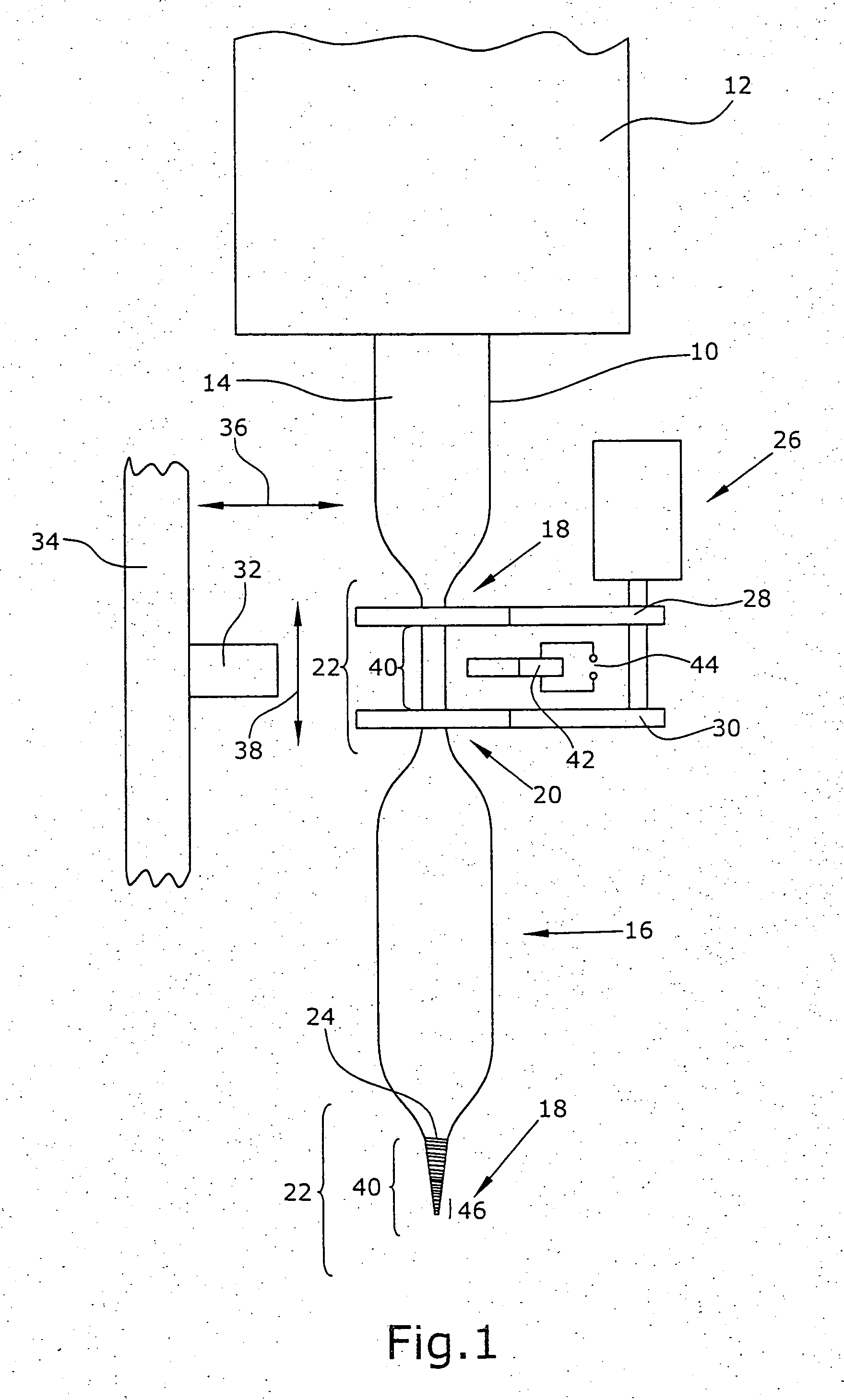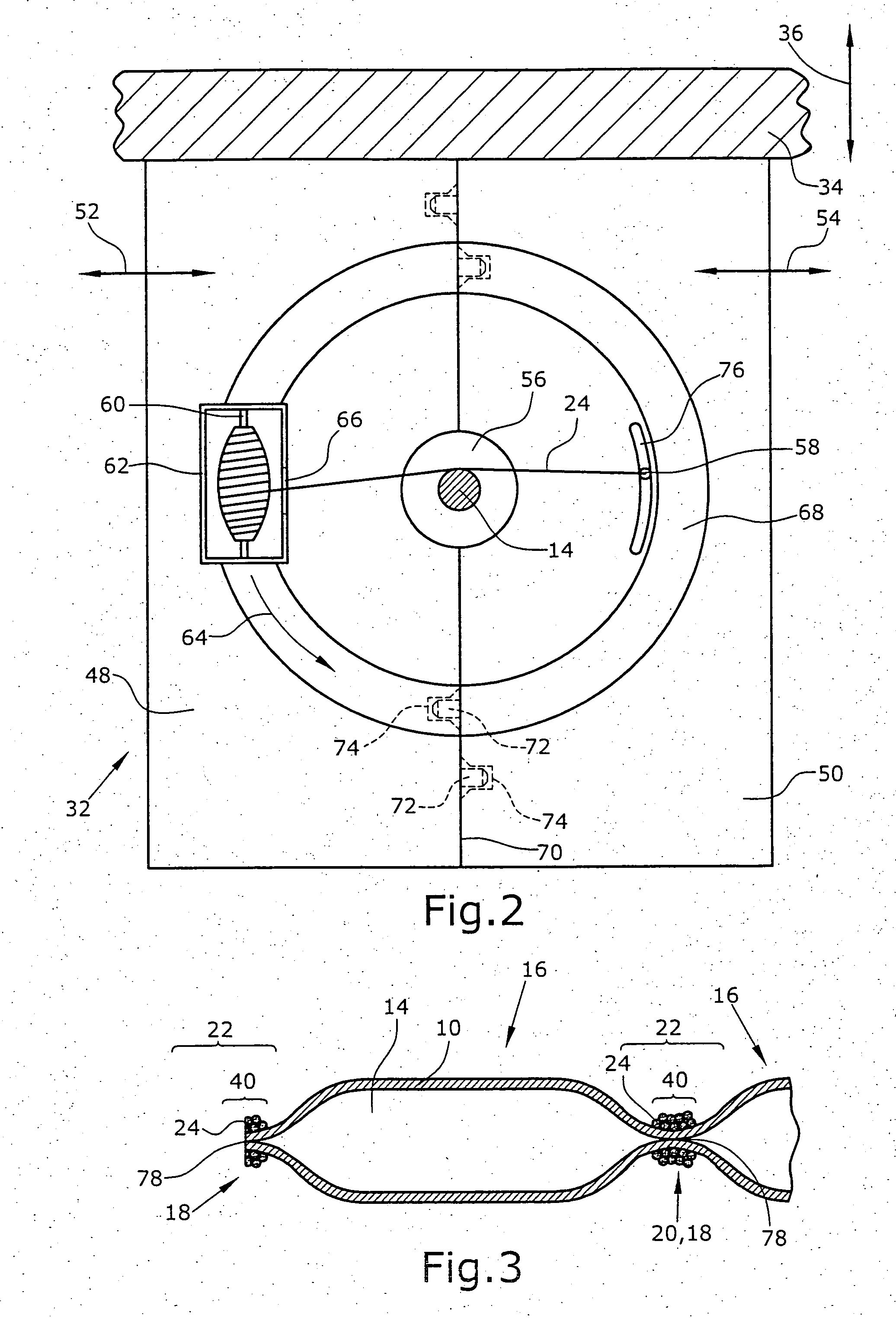Method and device for manufacturing tubular packs filled with a material as well as tubular pack filled with a material
a technology of tubular packs and materials, applied in the direction of containers, tray containers, applications, etc., can solve the problems of difficult recycling, limited preservation of tubular packs, and often tightness problems
- Summary
- Abstract
- Description
- Claims
- Application Information
AI Technical Summary
Benefits of technology
Problems solved by technology
Method used
Image
Examples
Embodiment Construction
[0032] FIG. 1 shows that a tube 10 is filled with a material, particularly a food, within a filling means 12. By the dead weight of a filled tube 14, it is transported downward without requiring a transport device of its own. The filled tube 14 is separated into individual tubular packs 16 comprising a first end 18 and a second end 20 by which the tubular pack 16 is limited.
[0033] The tube 14 filled with the material comprises a displacement area 22 that is to be wound with an embracing means 24. To this end, the filled tubular pack 14, in the illustrated embodiment, is first gripped, in the displacement area 22 by means of a displacing means 26 comprising two grippers 28,30 formed as two clamps. Subsequently, the grippers 28,30 are moved away from each other so that a large part of the material is displaced out of the displacement area 22.
[0034] Subsequently, a winding means 32 mounted at a carrier 34 is conducted in the direction of the arrow 36 into the displacement area 22 locat...
PUM
| Property | Measurement | Unit |
|---|---|---|
| embracing angle | aaaaa | aaaaa |
| winding angle | aaaaa | aaaaa |
| displacement | aaaaa | aaaaa |
Abstract
Description
Claims
Application Information
 Login to View More
Login to View More - R&D
- Intellectual Property
- Life Sciences
- Materials
- Tech Scout
- Unparalleled Data Quality
- Higher Quality Content
- 60% Fewer Hallucinations
Browse by: Latest US Patents, China's latest patents, Technical Efficacy Thesaurus, Application Domain, Technology Topic, Popular Technical Reports.
© 2025 PatSnap. All rights reserved.Legal|Privacy policy|Modern Slavery Act Transparency Statement|Sitemap|About US| Contact US: help@patsnap.com



